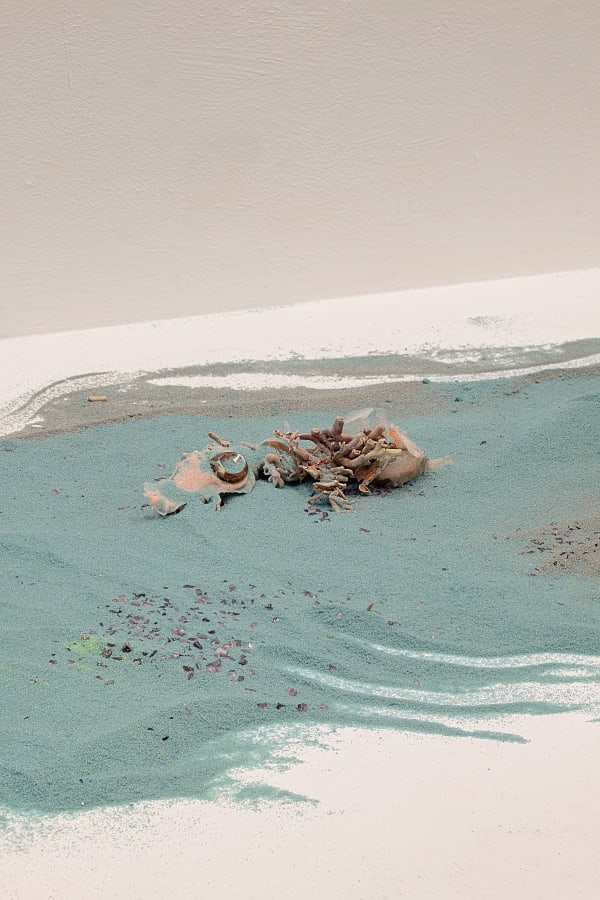Conjuring trapped/stolen memories: Installation by Sofya Skidan
There is memory and memory. There is personal memory, cultural memory, memory of malleable matter, electronic device memory, memory of a place. Text by Lera Kononchuk
Remembering and forgetting have become essential political and social levers. Full memory of a device causes anxiety, requiring to delete or redistribute digital souvenirs between cloud storages, these reservoirs of outsourced memory. Tragedies leave tangible traces that are often deliberately erased and destroyed — only to be eventually found (re-called) and deciphered.
The word conjuring in the title of Sofya Skidan's project alludes to a kind of manipulation that memories are subject to — akin to enchantments and other forms of intentional transformation of the given. In her digital collages and installations, objects of different nature and origin melt into one another — wood, silicone, stones, plastic, sand, found human-made and non-human-made things. All of them are selected by the artist as bearers of particular memories. By manipulating these memorabilia, Skidan creates — or invokes — imaginary landscapes where the virtual and the real mix together indistinguishably. She seeks out objects and textures that question the notions of the native (would it be taiga for her?) and the foreign (tropical forest then?), of the inside and the outside, the human and the nonhuman — so that the difference between the figure and the background, the base and the detail bleaches away. The blurring of that kind does not so much discard as subtly question the existing categories of identity and belonging.
In these hybrid meta-landscapes the thing's provenance is erased. The artist subtracts the specificity of the object, de-territorializing it and melting it into her coherently constructed aesthetic world of colors, shapes, and textures. Thus she practices both the negative side of conjuration — conjuring-out all traces of presence — and the positive one, responding to the qualities of the elements and creating unlikely fantastical combinations. This world is beautiful and intimidating without being indifferent: it emerges and takes shape along the lines of sight.
However, the result of the enchantment is subjected to the same procedure of oblivion due to material, institutional, and infrastructural factors beyond the artist's will. The sculptures created in Bali are confiscated by European customs; the artist is denied a visa; new variations of her installations are lost on transoceanic flights. We are reminded of the rigid limits of privilege that mark out our fluid modernity. Ironically, the object that embodies fragile planetary connectedness and interdependence is doomed to a Kafkaesque bureaucratic gridlock and the timelessness of border zones. So in its place, the artist leaves its spectral trace, a commemorative drawing that points to a loss, a grapheme of fragility and yet resistance to oblivion.






















